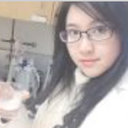Identification of Anthocyanins from Four Kinds of Berries and Their Inhibition Activity to α-Glycosidase and Protein Tyrosine Phosphatase 1B by HPLC-FT-ICR MS/MS.
Atslēgvārdi
Abstrakts
The polyphenolic profiles of four berries (blueberry, bilberry, mulberry, and cranberry) in China were investigated using Fourier transform-ion cyclotron resonance mass spectrometry (FT-ICR MS). Thirty-nine polyphenols including 26 anthocyanins, 9 flavonoids, and 4 phenolic acids were identified accurately. Cyanidin aglycones are common in four berries, and malvidin aglycones are the main compounds found in bilberry and cranberry. The anthocyanin level in blueberry are the highest with 739.6 ± 17.14 mg/g DW and presented the strongest antioxidant capacity in DPPH, ABTS, FRAP, and ORAC assay. In α-glycosidase, the inhibition activity was in the following order: mulberry > bilberry > blueberry > cranberry. For the PTP1B inhibition assay, blueberry demonstrated the highest inhibitory effect with IC50 3.06 ± 0.02 μg/mL, followed by bilberry, mulberry, and cranberry. Molecular docking results showed that cyanidin aglycones had the highest inhibition activity to PTP1B.


